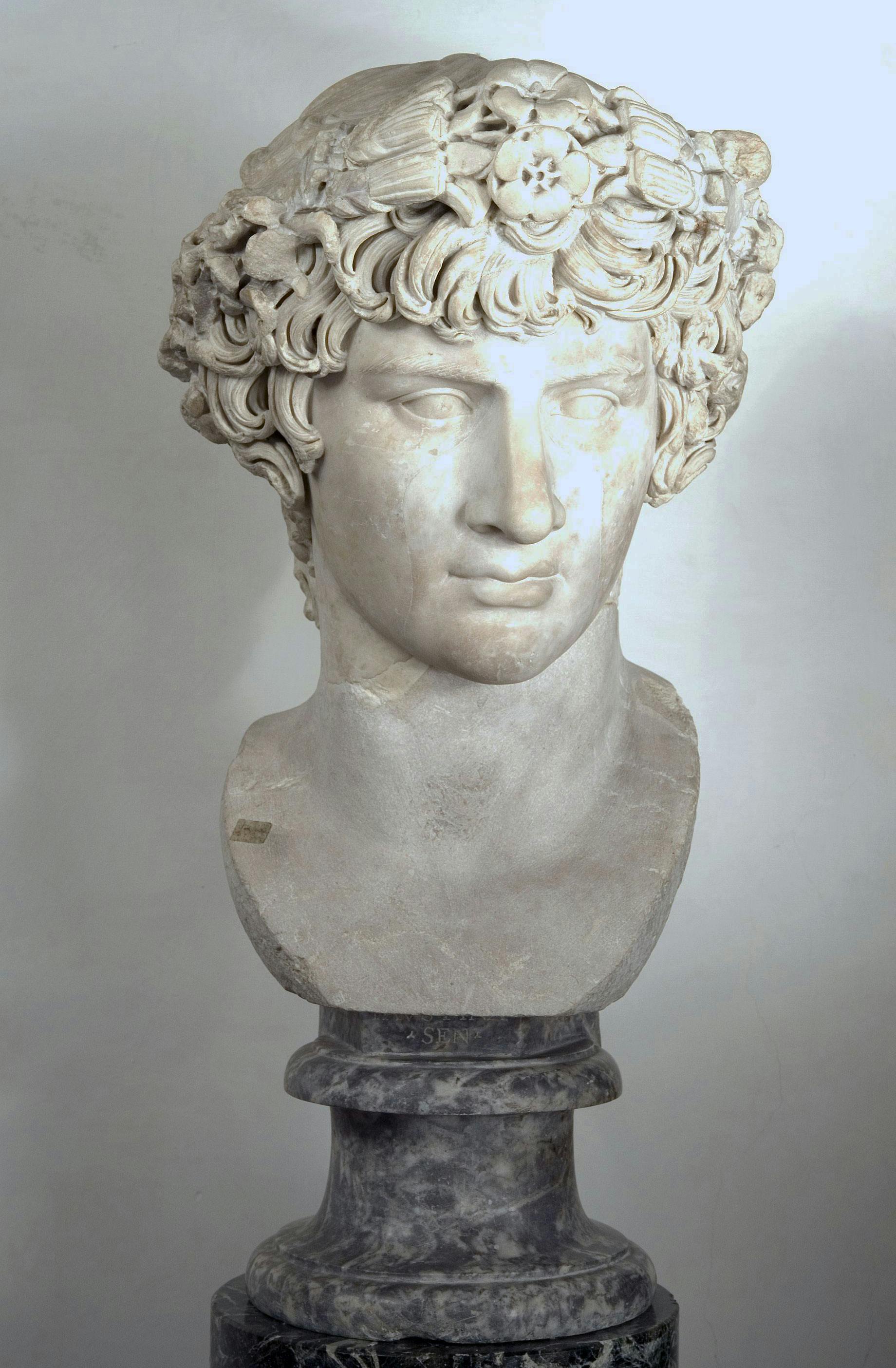Portrait of Antinous as Genius Frugiferus
Roman Art
This bust was mentioned for the first time in the inventories of 1753, although it must had already been preserved in the Galleries for some time. However, the events surrounding its entry into the Medici collections are yet to be investigated. In the 18th century, we know that the work was displayed in the Hall of Ancient Inscriptions, where it remained until its dismantling in 1930. It was then moved to storage, where it remained until 1973, when it was exhibited in the Vasari Corridor.
If in 1825 the sculpture was still listed as a “portrait of an unknown person”, despite the correct identification already present in Giuseppe Bencivenni Pelli's “Ristretto” of 1783, nowadays - despite the restoration work - scholars agree on identifying the protagonist with Antinous, the young man loved by the emperor Hadrian. This idealised representation possibly derives from a prototype commissioned by the emperor after the tragic death of Antinous, who allegedly drowned himself in the Nile to save the Prince, as revealed by an oracle.
The most substantial modern integration concerns the section in the median part of the face that runs from the root of the nose down to the chin, widening laterally to include the naso-labial folds and the muscles encircling the mouth. The neck, the central part of the crown, and some small locks below the flowers are also the result of restoration. The surface is chipped and presents signs of heavy sanding.
The head is slightly tilted to the left and bent forward, while the forehead is almost completely covered by the thick hair. The eyebrows, in relief and highlighted by a minute engraving, are almost horizontal but slightly raised upwards. The small, protruding eyes, with engraved iris, are characterised by elongated and thin eyelids. The wide, straight nose stands above the fleshy mouth and rounded chin. The face is marked by a melancholic expression that alludes to the tragic fate of the young man. The hair forms a compact mass that almost nullifies the volume of the head and frames the face. The large, wavy locks with curved ends are evidence of an extensive use of the drill that creates an almost metallic effect of intense chiaroscuro. At the back of the head, the hair, which was originally worked in a less refined manner, show numerous lacunae and traces of modern-day restoration. The crown adorning the hair is tied by a bandage, one end of which falls on the young man's neck and is still originally preserved on the right side.
The pedestal, which is not original, was put in place in the late 1950s and is made of cloudy Bardiglio marble, bearing the inscription FAUSTINA SEN.
Although the restoration works were quite invasive, Hadrian's beloved can be recognised thanks to the hair characterised by large wavy locks, which are adorned with a crown of flowers and wheat spikes, a detail that distinguishes this sculpture from other replicas. The style of the hair not only allows to date the head back to the last years of Hadrian's reign (117 - 138 AD), but also to include this statue in marble among the examples of variant A of the type Haupttypus, the main portrait type of Antinous, due to the presence of a small lock above the left eyebrow that is oriented in the opposite direction to the others. Moreover, the hair allows to relate this sculpture to another portrait of Antinous preserved in the Uffizi (inv. 1914, no. 327); on the contrary, the eyebrows and the shape of the face, which is more slender and elongated, are reminiscent of the Capitoline style.
The particular crown decorated with wheat spikes and flowers is also present in the bas-relief of Villa Albani, thus leading Mansuelli and Clairmont to classify this head as a depiction of Antinous as Triptolemus, a mythological character linked to the goddess Demeter and to agriculture, also due to the fact that the young man was initiated into the Eleusinian Mysteries and after the discovery of an inscription in which, after being deified, he was referred to as Frugiferus, i.e. “fruitful”. On the other hand, after having identified wheat spikes, poppies and pomegranate flowers in the crown, Meyer advanced the hypothesis that Antinous was depicted as a seasonal Genius personifying summer.
G. A. Mansuelli, Galleria degli Uffizi. Le sculture, vol. 2, p. 91, n. 99 con bibliografia precedente, 1961; C. Caneva, Il Corridoio vasariano agli Uffizi, p. 276 - 277, 2002; A. Galimberti, Adriano e Antinoo nelle fonti storiche, pp. 19 – 25, in Antinoo, pp. 15 – 29, 2012; Volti Svelati. Antico e passione per l’antico, pp. 90 – 91, n. II.19, catalogo della mostra (Firenze, Reali Poste, 15 dicembre 2011 – 29 gennaio 2012) a cura di V. Conticelli, F. Paolucci, Livorno, 2011
